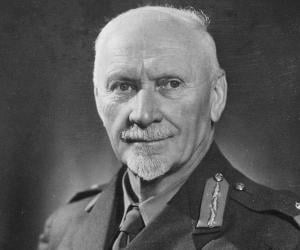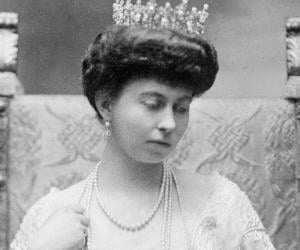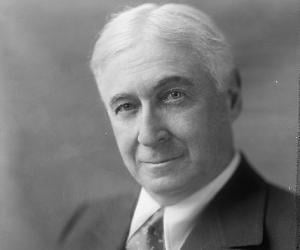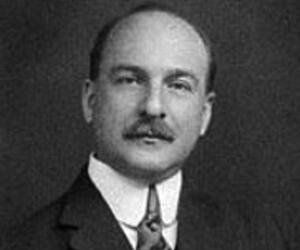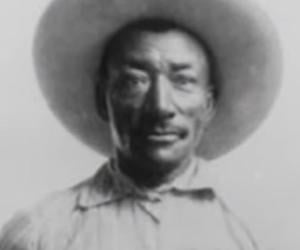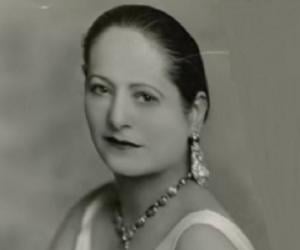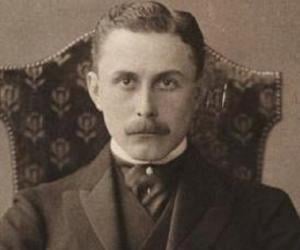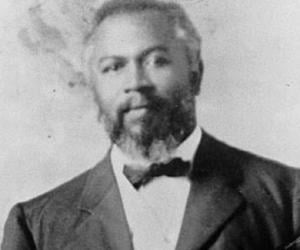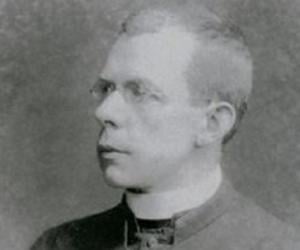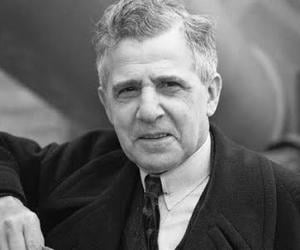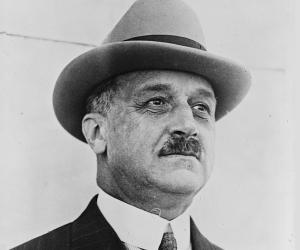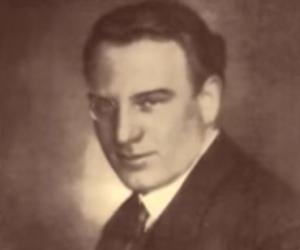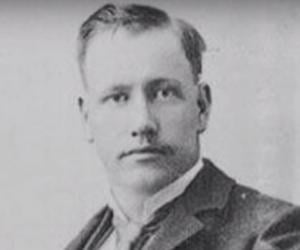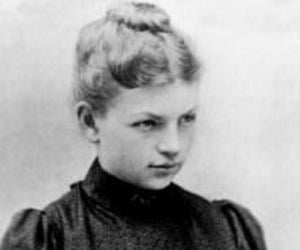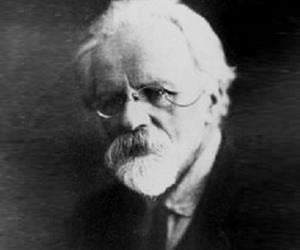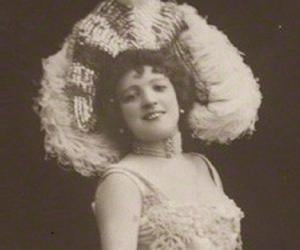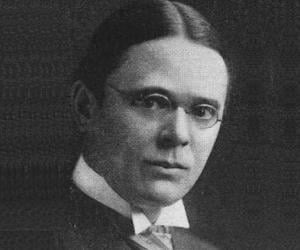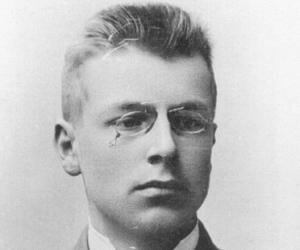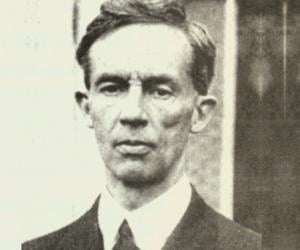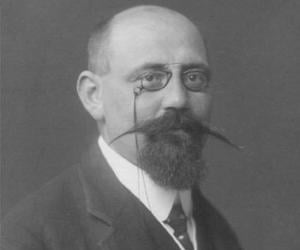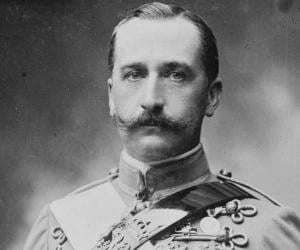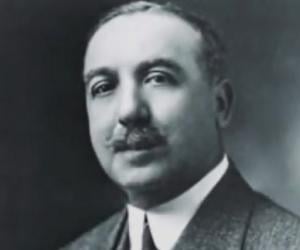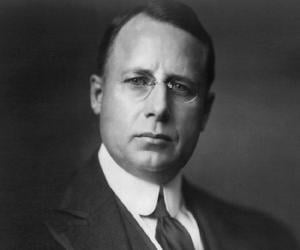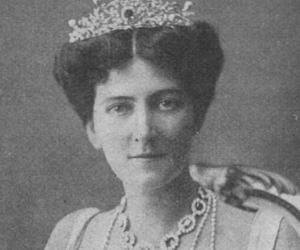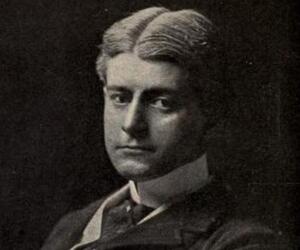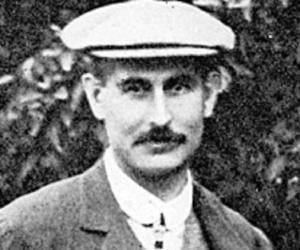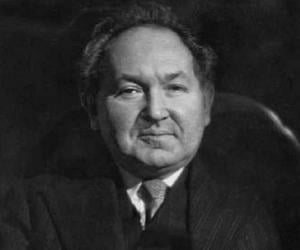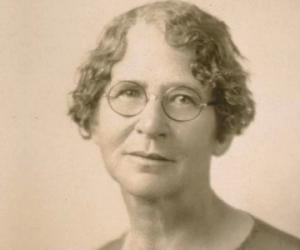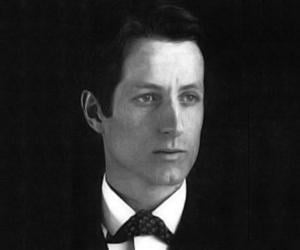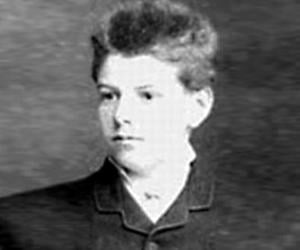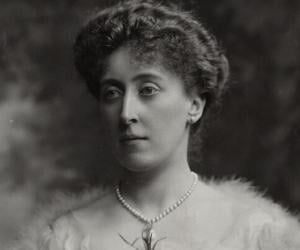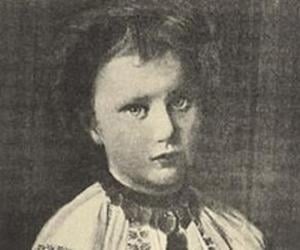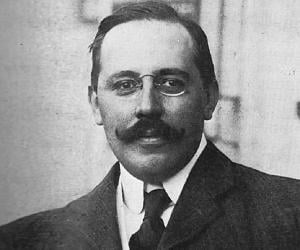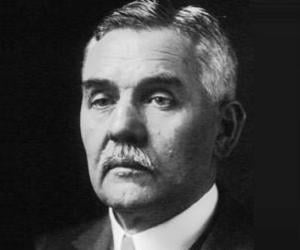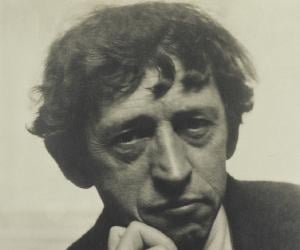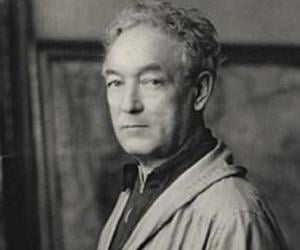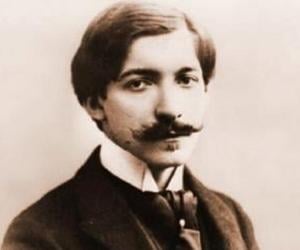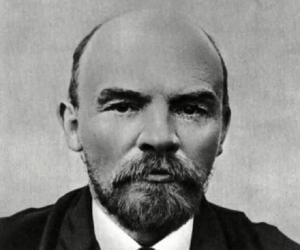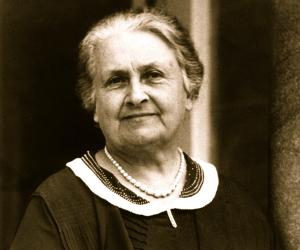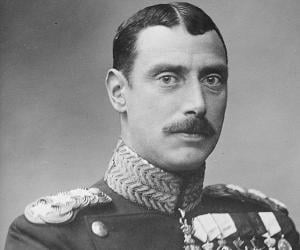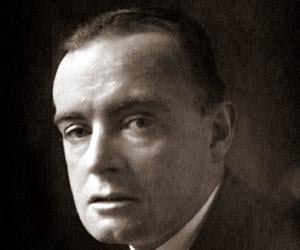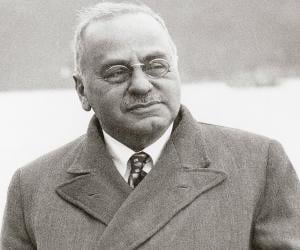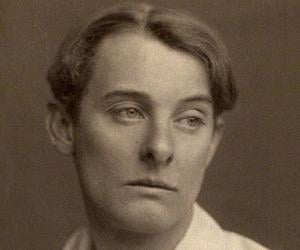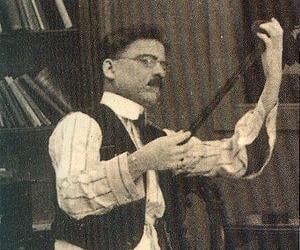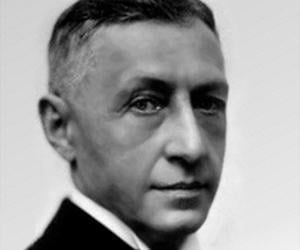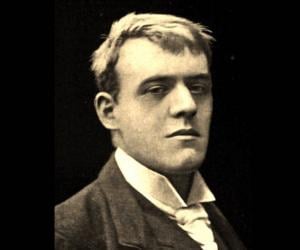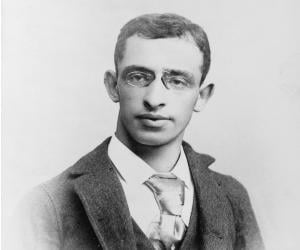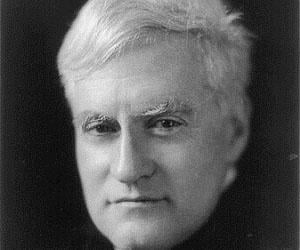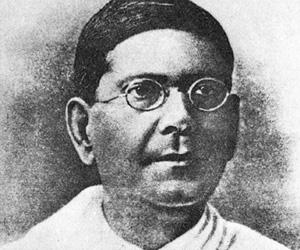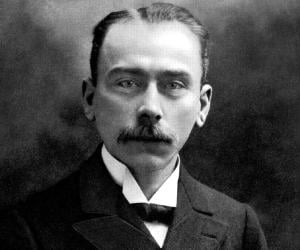Famous People Born In 1870
Discover the most famous people born in 1870. The list includes people like Vladimir Lenin, Alfred Adler, Maria Montessori, Saki, Hilaire Belloc and many more. This list of celebrities is loosely sorted by popularity. People featured on this list, include political leaders, lawyers, diplomats and military leaders born in 1870. This list includes people from United States, France, Austria & Germany and many more countries.
Vote for Your Favourite Person
Right IconThis ranking is based on an algorithm that combines various factors, including the votes of our users and search trends on the internet.
1
Vladimir Lenin(Russian Revolutionary & Politician Who Served as the First Head of Government of Soviet Russia)
Birthdate: 22nd April
Sun Sign: Taurus
Birthplace: Ulyanovsk, Russia
Died: January 21, 1924
Vladimir Lenin played a key role in the history of Russian politics by developing a political ideology called Leninism. During and after his lifetime, Lenin had a massive influence over international communist movement. He is widely regarded as one of the most influential and significant personalities of the 20th century.
2
Maria Montessori(Italian Educator and Founder of the 'Montessori Method of Education')
Birthdate: 1st August
Sun Sign: Leo
Birthplace: Chiaravalle, Italy
Died: April 30, 1952
Maria Montessori was an Italian educator and physician best known for developing the Montessori method of education, a student-friendly method, which is being used in several public and private schools around the world. In 2020, she was nominated by Time magazine as one of their Top 100 Women of the year.
Birthdate: 26th September
Sun Sign: Libra
Birthplace: Charlottenlund, Denmark
Died: April 20, 1947
Christian X was the first Danish royal to complete high school, although he took up military education after this, following the royal tradition. He showed his resistance to Germans when he went on horse rides regularly during the German occupation. He later became an invalid after falling from his horse.
Birthdate: 18th December
Sun Sign: Sagittarius
Birthplace: Sittwe, Myanmar (Burma)
Died: November 14, 1916
5
Alfred Adler(Austrian Psychotherapist and Founder of the School of ‘Individual Psychology’)
Birthdate: 7th February
Sun Sign: Aquarius
Birthplace: Rudolfsheim-Fünfhaus, Vienna, Austria
Died: May 28, 1937
Alfred Adler was an Austrian psychotherapist and medical doctor. He is credited with founding the school of individual psychology. He was also one of the founders of the psychoanalytic movement along with Sigmund Freud and Freud's colleagues. In 2002, a survey conducted by Review of General Psychology named Adler among the 20th century's most eminent psychologists.
6
Jan Smuts
(2nd Prime Minister of South Africa)
Birthdate: 24th May
Sun Sign: Gemini
Birthplace: Riebeeck West, South Africa
Died: September 11, 1950
Jan Smuts was a South African military leader, statesman, and philosopher. He played a key role in the formation of the Union of South Africa and helped shape its constitution. From 1919 to 1924 and again from 1939 to 1948, he served as the Union of South Africa's prime minister. He played a major role in establishing the United Nations.
7
Alfred Douglas(British Poet, Journalist and Lover of Irish Poet Oscar Wilde)
Birthdate: 22nd October
Sun Sign: Libra
Birthplace: Powick, Worcestershire, England
Died: March 20, 1945
Alfred Douglas was an English journalist and poet best remembered as one of the lovers of famous Irish poet Oscar Wilde. Douglas played an important role in Wilde's imprisonment for homosexuality. Alfred Douglas' father John Sholto Douglas abhorred his son's relationship with the Irish poet and publicly accused the latter of homosexuality, which was illegal at that time.
8
Sophia of Prussia
(Princess of Prussia and Former Queen consort of the Hellenes (1913 - 1917))
Birthdate: 14th June
Sun Sign: Gemini
Birthplace: New Palace, Potsdam, Germany
Died: January 13, 1932
The daughter of German emperor Frederick III, Princess Sophia of Prussia was also one of the granddaughters of Queen Victoria through her mother. She later became the queen consort of the Hellenes by her marriage to King Constantine I of Greece. Following the National Schism, she spent her life in exile.
9
Bernard Mannes Baruch
(Financier)
Birthdate: 19th August
Sun Sign: Leo
Birthplace: Camden, South Carolina, United States
Died: June 20, 1965
Birthdate: 30th April
Sun Sign: Taurus
Birthplace: Tryambakeshwar, Bombay Presidency
Died: February 16, 1944
11
Pierre S. du Pont
(Entrepreneur)
Birthdate: 15th January
Sun Sign: Capricorn
Birthplace: Wilmington, Delaware, United States
Died: April 4, 1954
Birthdate: 5th December
Sun Sign: Sagittarius
Birthplace: Williamson County, Texas, United States
Died: April 2, 1932
13
Helena Rubinstein
(Business women)
Birthdate: 27th March
Sun Sign: Aries
Birthplace: Kraków, Austrian Poland
Died: April 1, 1965
Birthdate: 10th December
Sun Sign: Sagittarius
Birthplace: Brno
Died: August 23, 1933
Austrian architect Adolf Loos is often compared to American architect Frank Lloyd Wright in terms of his contribution. Loos believed architecture shouldn’t contain the extra elements and ornaments promoted by Art Nouveau. Mostly known for his residential projects, he built modern buildings such as the Goldman and Salatsch Building.
15
Ivan Bunin(The First Russian Writer to Receive the Nobel Prize for Literature)
Birthdate: 22nd October
Sun Sign: Libra
Birthplace: Voronezh, Russia
Died: November 8, 1953
Ivan Bunin was a Russian writer whose stories and poems are regarded as one of the richest collection of works in the Russian language. In 1933, Ivan Bunin became the first Russian writer to be honored with the prestigious Nobel Prize for Literature. Subsequently, he donated 100,000 francs to a charity fund.
16
Hilaire Belloc(Poet and Author Best Known for His Humorous Poem ‘Cautionary Tales for Children’)
Birthdate: 27th July
Sun Sign: Leo
Birthplace: La Celle-Saint-Cloud, France
Died: July 16, 1953
British-French writer Hilaire Belloc is one of the most controversial figures of England from the 20th century, owing to the accusations of anti-semitism and marked Catholic influence in his works. Remembered for his Cautionary Tales for Children, he continued to move from place to place, thus depleting his finances.
Birthdate: 21st November
Sun Sign: Scorpio
Birthplace: Vilnius
Died: June 28, 1936
Alexander Berkman was a Russian-American anarchist and author. He was famous for both his political activism and his writing and was a leading member of the anarchist movement in the early 20th century. He served as the editor of fellow anarchist Emma Goldman's anarchist journal, Mother Earth. He suffered from ill-health in his later years and died by suicide.
18
William J. Seymour
(Preacher)
Birthdate: 2nd May
Sun Sign: Taurus
Birthplace: Louisiana
Died: September 28, 1922
William J. Seymour was an African-American holiness preacher. He is credited to have initiated the Azusa Street Revival, an influential event in the rise of the Charismatic and Pentecostal movements. He was a student of the early Pentecostal minister Charles Parham. He played a major role in the spread of Pentecostalism to various parts of America.
Birthdate: 26th February
Sun Sign: Pisces
Birthplace: Leeds, Yorkshire, England
Died: April 15, 1912
20
Joseph Strauss
(American Structural Engineer Who Revolutionized the Design of 'Bascule Bridges')
Birthdate: 9th January
Sun Sign: Capricorn
Birthplace: Cincinnati, Ohio, United States
Died: May 16, 1938
Best known for designing the Golden Gate Bridge, engineer Joseph Strauss specialized in movable bridges and developed the concepts of the bascule bridge and the vertical-lift bridge. Born to a pianist mother and a painter-writer father, he later also penned poems such as The Mighty Task is Done.
21
Amadeo Giannini
(Founder of 'Bank of America')
Birthdate: 6th May
Sun Sign: Taurus
Birthplace: San Jose, California, United States
Died: June 3, 1949
Amadeo Giannini was an American banker best remembered for founding the Bank of Italy, which later became Bank of America. He is credited with inventing numerous modern banking practices. Amadeo Giannini is also credited with establishing one of the first trans-national institutions.
22
Benjamin Cardozo(Associate Justice of the Supreme Court of the United States from 1932 to 1938)
Birthdate: 24th May
Sun Sign: Gemini
Birthplace: New York, New York, United States
Died: July 9, 1938
American lawyer Benjamin Cardozo had served as the Associate Justice of the US Supreme Court. More of a liberal, he supported the modification of existing legal principles to make them more modern. He is remembered for his mild-mannered nature and for his contribution to the American common law.
23
Franz Lehár
(Austro-Hungarian Composer Known for His Operettas)
Birthdate: 30th April
Sun Sign: Taurus
Birthplace: Komárom, Hungary
Died: October 24, 1948
Hungarian composer Franz Lehár is best remembered for his operettas and became a worldwide sensation with The Merry Widow, which was later filmed, too. His distinctive style of Viennese operetta consisted of satire and Parisian dances. Though he had a Jewish-turned-Catholic wife, Hitler loved his music.
24
William G. Morgan
(American Educator and Inventor of Volleyball)
Birthdate: 23rd January
Sun Sign: Aquarius
Birthplace: Lockport, New York, United States
Died: December 27, 1942
25
Clara Immerwahr
(German Chemist)
Birthdate: 21st June
Sun Sign: Gemini
Birthplace: Wojczyce, Poland
Died: May 2, 1915
Clara Immerwahr was a German chemist who became the first German woman to receive a doctorate in chemistry. Apart from being a chemist, Clara Immerwahr was also a pacifist and a women's rights activist. Her work, marriage with the popular chemist Fritz Haber, and her suicide at the age of 44 have inspired films, novels, and TV series.
26
Ilya Ivanovich Ivanov
(Biologist)
Birthdate: 1st August
Sun Sign: Leo
Birthplace: Shchigry
Died: March 20, 1932
Birthdate: 12th February
Sun Sign: Aquarius
Birthplace: Hoxton, London, United Kingdom
Died: October 7, 1922
Birthdate: 27th October
Sun Sign: Scorpio
Birthplace: Lincoln, Nebraska, United States
Died: June 30, 1964
29
Juho Kusti Paasikivi
(7th President of Finland)
Birthdate: 27th November
Sun Sign: Sagittarius
Birthplace: Hämeenkoski, Finland
Died: December 14, 1956
The 7th president of Finland, Juho Kusti Paasikivi has also been his country’s prime minister. He had chaired the Senate of Finland, too. He is chiefly remembered for his post-World War II foreign policies. Initially an academician of law, he later turned to banking and insurance management and, eventually, to politics.
30
Robert Erskine Childers
(Former Teachta Dála of Ireland)
Birthdate: 25th June
Sun Sign: Cancer
Birthplace: Mayfair, London, England
Died: November 24, 1922
31
Karl Renner
(President of Austria from 1945 to 1950)
Birthdate: 14th December
Sun Sign: Sagittarius
Birthplace: Dolní Dunajovice, Czech Republic
Died: December 31, 1950
Remembered as the Father of the Republic in Austria, Karl Renner led his country as its third president. Previously, he had also led the first Austrian republic. Born into a humble family of wine-growers, he studied law and began his political career with the SDAP.
32
Prince Carlos of Bourbon-Two Sicilies
(Infante Carlos of Spain and Inspector General of the Spanish Army)
Birthdate: 10th November
Sun Sign: Scorpio
Birthplace: Gries-San Quirino, Bolzano, Italy
Died: November 11, 1949
Prince Carlos of Bourbon-Two Sicilies was nephew of Francis II, the last King of the Two Sicilies. Carlos was given the title of Infante of Spain before his marriage to Mercedes, Princess of Asturias, daughter of the late King Alfonso XII of Spain. Carlos served the Spanish Army during the Spanish–American War and was later promoted as Inspector General.
33
Edwin S. Porter
(Pioneering Filmmaker of the Early 1900s)
Birthdate: 21st April
Sun Sign: Taurus
Birthplace: Connellsville, Pennsylvania, United States
Died: April 30, 1941
Director Edwin S. Porter, best known for films such as The Life of An American Fireman and The Great Train Robbery, revolutionized filmmaking with his pioneering technique of cross-cutting in editing. He had previously been a tailor and had served the US Navy, before being hired by the Edison Company.
Birthdate: 5th November
Sun Sign: Scorpio
Birthplace: Kolkata, India
Died: June 16, 1925
Birthdate: 31st March
Sun Sign: Aries
Birthplace: Jacksonburg, Ohio, U.S.
Died: July 15, 1957
36
Mary Victoria Curzon, Baroness Curzon of Kedleston
(Vicereine)
Birthdate: 27th May
Sun Sign: Gemini
Birthplace: Chicago, Illinois, United States
Died: July 18, 1906
Birthdate: 5th March
Sun Sign: Pisces
Birthplace: Chicago, Illinois, U.S
Died: October 25, 1902
Birthdate: 9th May
Sun Sign: Taurus
Birthplace: Grouville, Jersey, Channel Islands
Died: March 20, 1937
39
Leopold Godowsky
(Virtuoso Pianist, Composer and Teacher, Termed as ‘Buddha of the Piano’ by Famous Musicians)
Birthdate: 13th February
Sun Sign: Aquarius
Birthplace: Soshly, Lithuania
Died: November 21, 1938
Leopold Godowsky was a renowned Polish-born American pianist, composer and teacher counted among the most highly regarded performers of his day. Notable works of the virtuoso, who was reputed for his remarkable piano technique, includes his compositions like Java Suite, Walzermasken, Passacaglia and Triakontameron; and 53 Studies on Chopin's Études, a set of 53 arrangements of Études by Frédéric Chopin.
40
Ynes Mexia
(Mexican-American Botanist Best Known For Her Large Collection of Plants)
Birthdate: 24th May
Sun Sign: Gemini
Birthplace: Washington, D.C., United States
Died: July 12, 1938
Ynes Mexia was a Mexican-American botanist best remembered for her large collection of specimens of plants and flora originating from the sites of Mexico, Peru, and Colombia. She collected more than 150,000 specimens over a period of 16 years, during which she encountered various challenges, including dangerous terrain, poisonous berries, earthquakes, and bogs.
41
Maxfield Parrish
(Painter)
Birthdate: 25th July
Sun Sign: Leo
Birthplace: Philadelphia, Pennsylvania, United States
Died: March 30, 1966
42
Louis Bachelier
(French Mathematician)
Birthdate: 11th March
Sun Sign: Pisces
Birthplace: Le Havre, France
Died: April 28, 1946
French mathematician Louis Bachelier was said to be the first to chart a mathematical model for what is now called the Brownian motion. After losing his wine merchant father early in life, he took over the reins of his family business, but he gradually became a pioneer in mathematical finance.
43
Princess Helena Victoria of Schleswig-Holstein
(Princess)
Birthdate: 3rd May
Sun Sign: Taurus
Birthplace: Frogmore House, Windsor, England
Died: March 13, 1948
44
Princess Maria of Romania
(Princess)
Birthdate: 8th September
Sun Sign: Virgo
Birthplace: Bucharest, Romania
Died: April 9, 1874
45
Jules Bordet(Nobel Prize-Winning Belgian Scientist Known for His Discovery of Factors in Blood Serum that Destroy Bacteria)
Birthdate: 13th June
Sun Sign: Gemini
Birthplace: Soignies
Died: April 6, 1961
Nobel Prize-winning Belgian immunologist and microbiologist Jules Bordet is remembered for his discovery of blood serum components that are capable of destroying bacteria. He later established the Pasteur Institute of Brussels and taught at the Free University of Brussels. He also discovered the Bordetella pertussis bacteria that causes whooping cough.
46
Josef Hoffmann
(Architect, Designer)
Birthdate: 15th December
Sun Sign: Sagittarius
Birthplace: Brtnice
Died: May 7, 1956
Architect Josef Hoffmann was one of the pioneering figures of the Vienna Sezession. He also supported the British Arts and Crafts Movement and helped in setting up the Vienna Workshop, serving as its director for 30 years. He was later made the city architect of Vienna.
47
Georges Claude
(French Engineer and Inventor)
Birthdate: 24th September
Sun Sign: Libra
Birthplace: Paris, France
Died: May 23, 1960
French engineer and inventor Georges Claude was often referred as the Edison of France. He is most noted for inventing and commercializing neon lighting and having a near monopoly on the new technology, for conducting an experiment to generate thermal energy of the ocean and building the first Ocean Thermal Energy Conversion (OTEC) plant, and for the Claude cycle.
48
John Marin
(painter, architect)
Birthdate: 23rd December
Sun Sign: Capricorn
Birthplace: Rutherford
Died: October 2, 1953
49
William Glackens
(American Painter)
Birthdate: 13th March
Sun Sign: Pisces
Birthplace: Philadelphia, Pennsylvania, United States
Died: May 22, 1938
Birthdate: 10th December
Sun Sign: Sagittarius
Birthplace: Ghent, Belgium
Died: June 6, 1925
